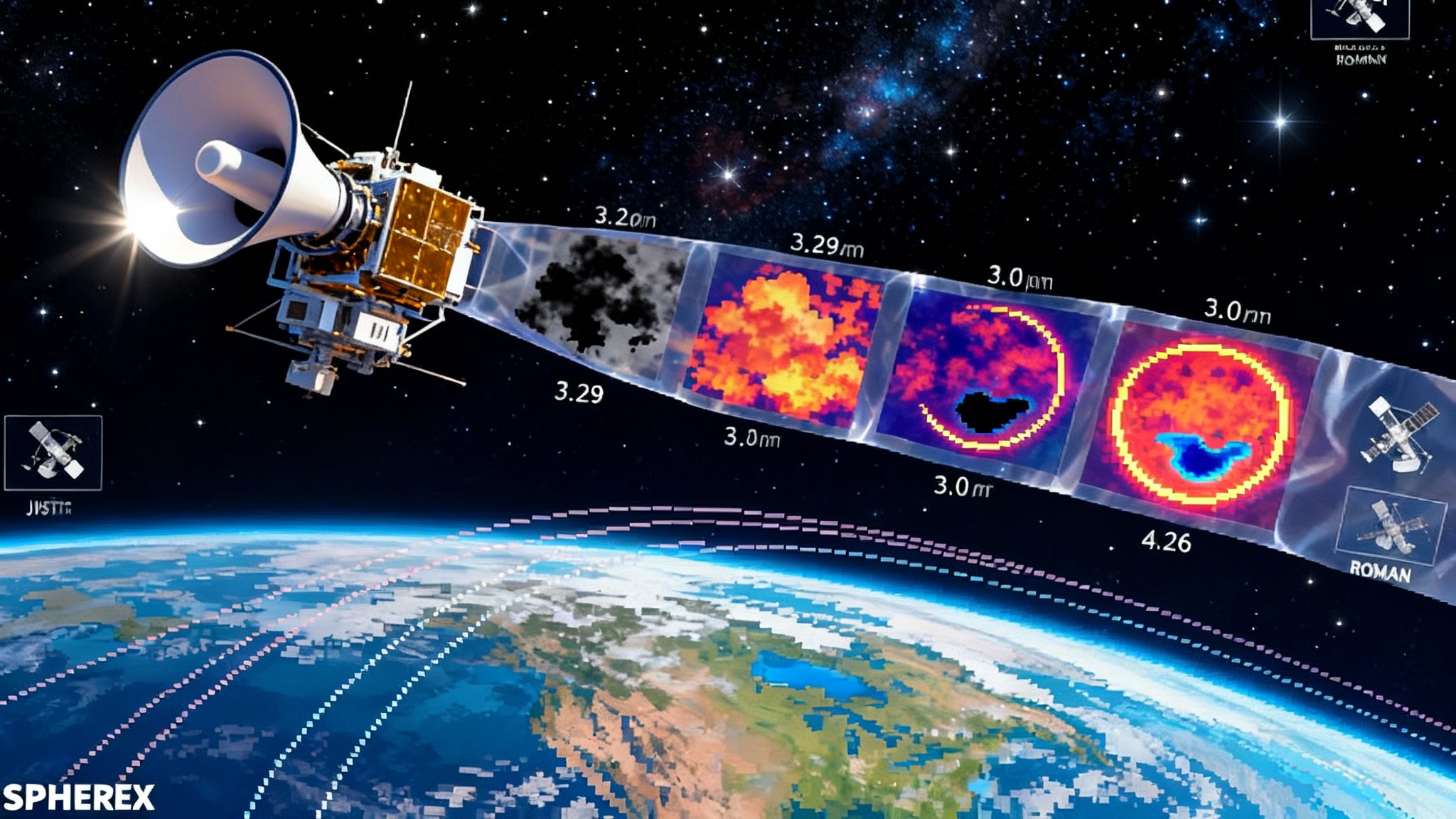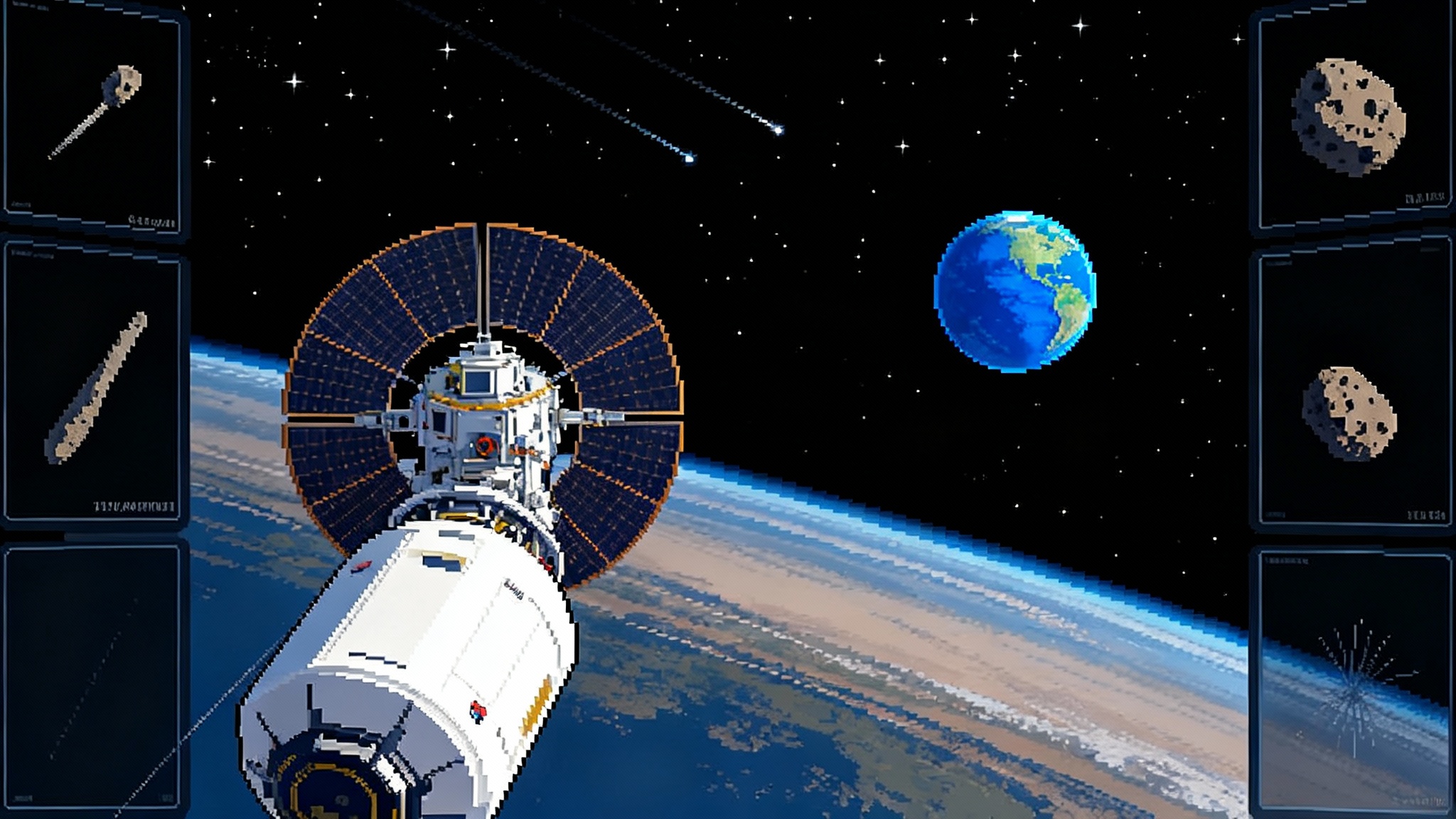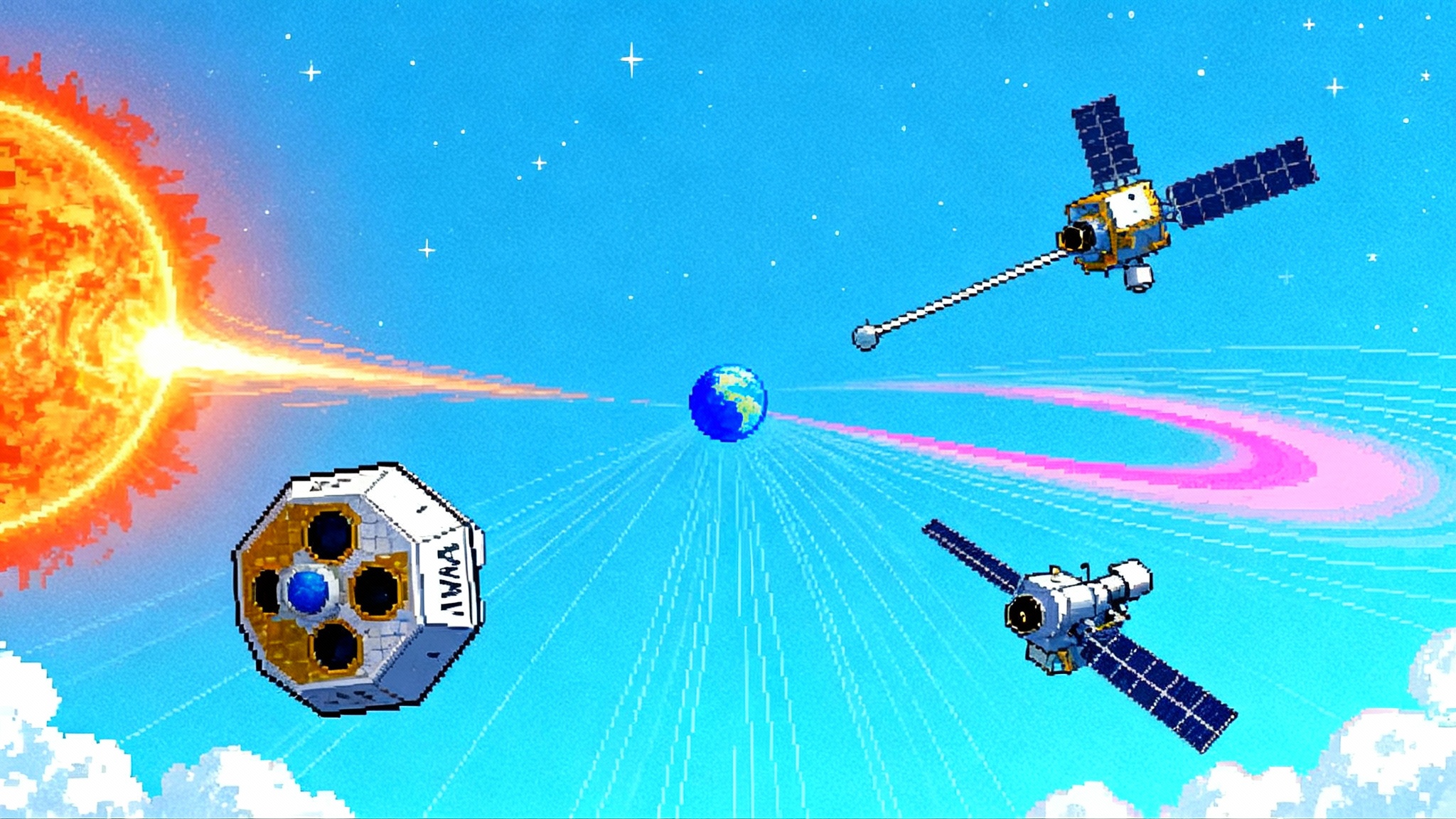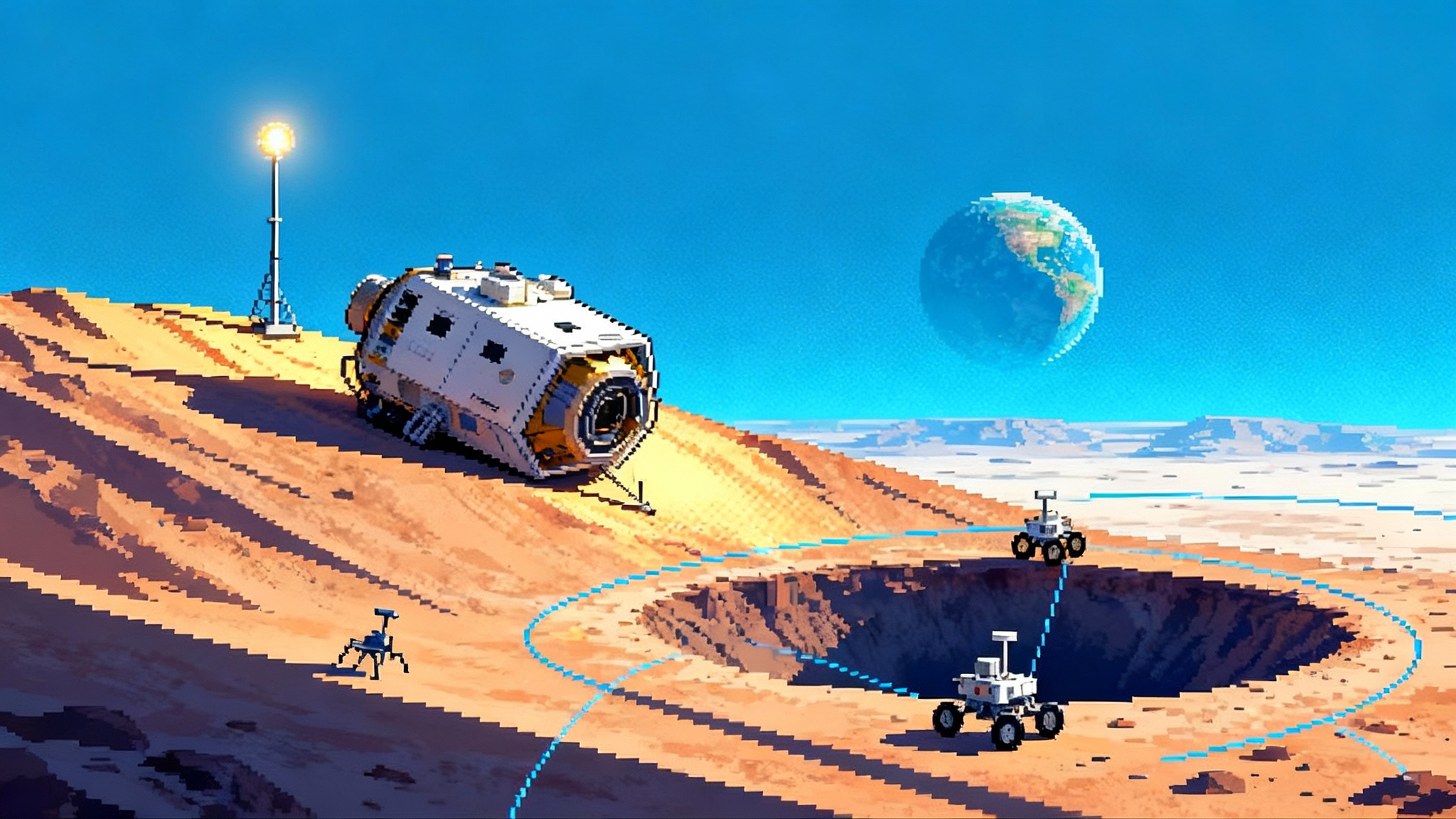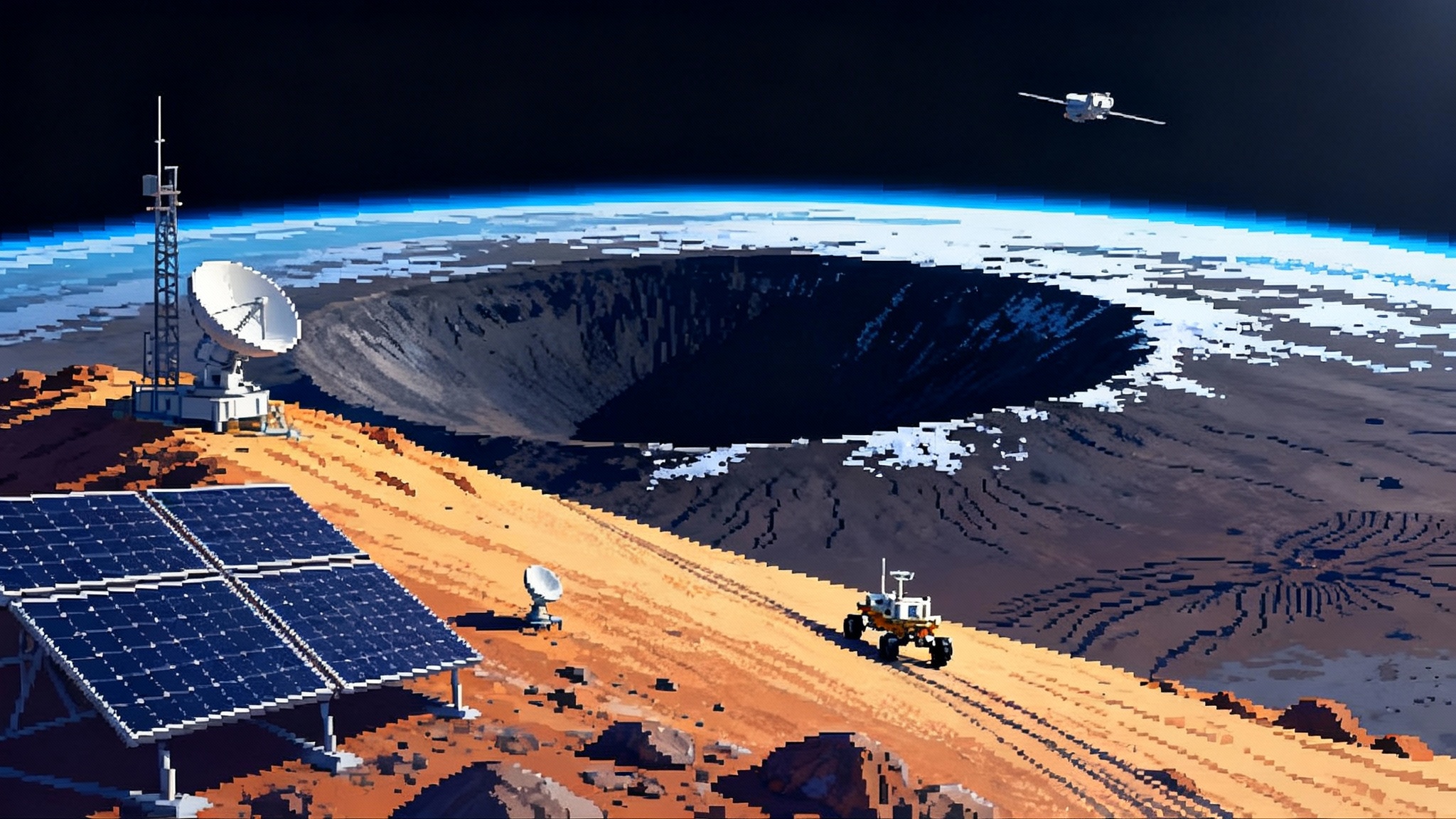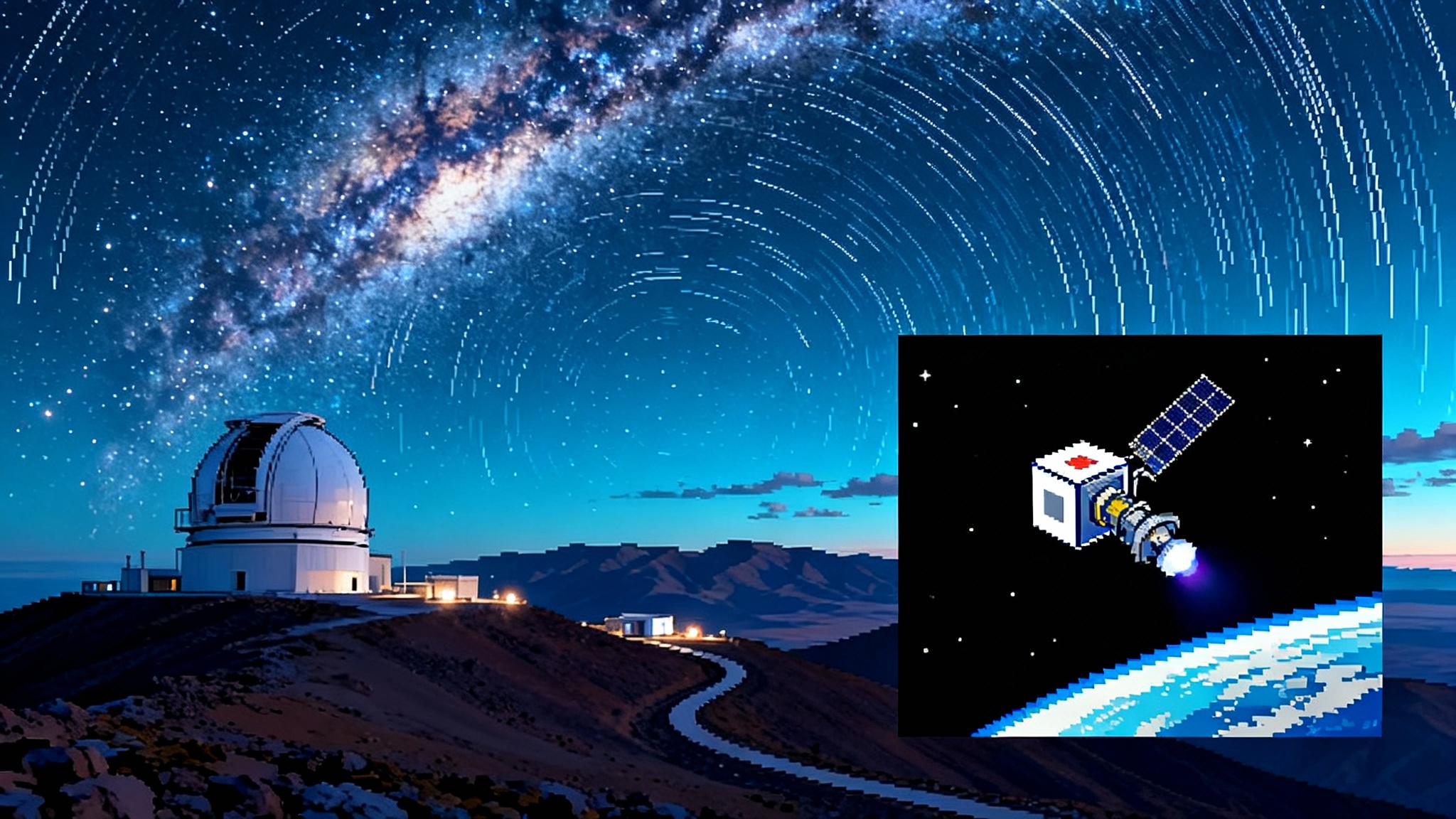Parker at Solar Maximum: 2025 Sun Dives Make Weather Now
As Solar Cycle 25 peaks in late 2025, Parker Solar Probe is flying inside the Sun’s corona and capturing the earliest signatures of flares, CMEs, and particle storms. Here is how those in-corona measurements can tighten arrival-time forecasts, safeguard Artemis crews, and fortify power grids.
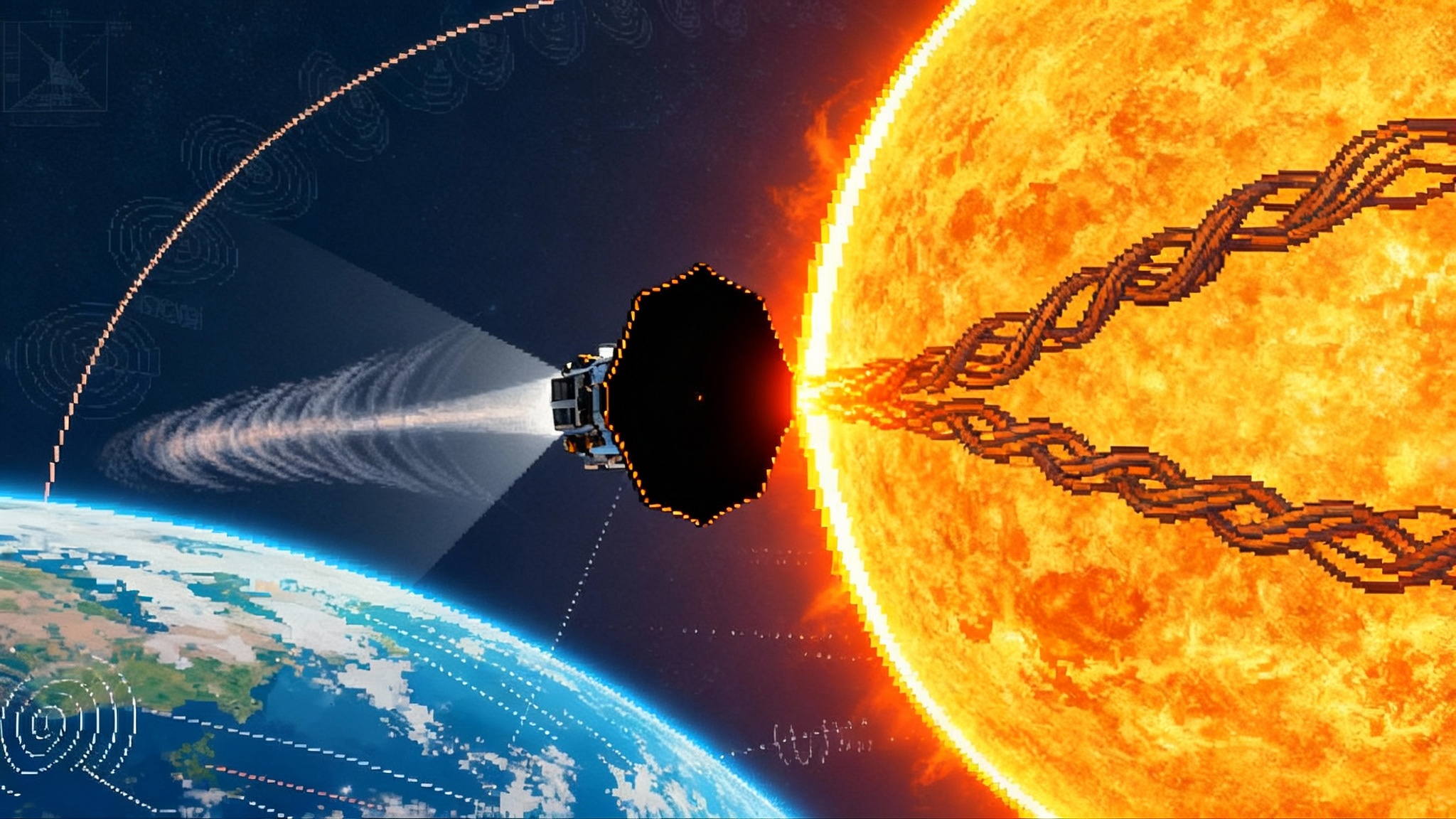
Breaking through the Sun’s noise
The Sun is at full voice in late 2025, and Parker Solar Probe is listening from inside the orchestra pit. After completing the last flyby of its baseline plan in June, confirmed by NASA’s mission team, Parker kept flying and kept measuring from within the solar corona. That is not a metaphor. The spacecraft’s sensors are operating inside the Sun’s outer atmosphere, where the solar wind is born and space weather events take shape, often hours to days before they reach Earth. NASA marked the June milestone in a mission update that also outlined what comes next for operations review in 2026. See the summary of that final baseline pass in NASA’s June 23 mission update.
Then, on September 15, 2025, Parker completed its 25th perihelion at a blistering 430,000 miles per hour, again skimming only about 3.8 million miles above the solar surface. The craft checked in on September 18 in good health and began returning data on September 23. With the Sun cresting its 11-year cycle, these in-corona measurements are arriving at the best possible time. NASA called out the significance of this pass in NASA’s September 18 flyby report.
The implication is simple and powerful. If you want better space weather forecasts, do not only stare at the Sun from Earth, put a buoy in the storm. Parker is that buoy.
Why in-corona data is qualitatively different
Most space weather forecasting has relied on two vantage points. First, telescopes that watch the Sun’s surface and corona from a distance, which are excellent for spotting the launch of a bright flare or a coronal mass ejection. Second, outposts like the Advanced Composition Explorer and Deep Space Climate Observatory that float upstream of Earth at the L1 Lagrange point. For context on the next-generation L1 architecture, see IMAP’s three-spacecraft stack at L1. L1 measurements give storm warnings about 15 to 60 minutes before a disturbance reaches Earth. That is like seeing whitecaps from a mile away after the storm is already on the lake.
Parker’s orbit is different. It flies through the region where the solar wind accelerates and where coronal mass ejections, often abbreviated as CMEs, are still forming their magnetic and shock structures. This is where the physics that decides severity actually happens. By sampling plasma and fields at a few to a few dozen solar radii, Parker can catch the birth of the magnetic configurations that later control whether Earth gets a glancing blow or a direct hit, and whether the storm’s magnetic field points southward, which is the orientation that couples strongly to Earth’s magnetosphere.
Think of it as the difference between forecasting a hurricane from satellite images alone versus also having a ring of aircraft that fly the eyewall. Satellites show the swirl. Aircraft measure the pressure, the wind shear, and the temperature gradients that determine rapid intensification. Parker is our eyewall flyer for space weather.
What the probe measures and why it matters for prediction
Parker carries four instrument suites whose names matter because each feeds a different piece of the forecast puzzle.
- FIELDS measures electric and magnetic fields and the density of radio waves. These data reveal how the magnetic field is oriented and how it fluctuates. They capture the zigzag patterns known as magnetic switchbacks, which tell forecasters how energy cascades from large scales into the turbulent mix that accelerates the solar wind.
- SWEAP (Solar Wind Electrons Alphas and Protons) counts and characterizes charged particles. It gives the speed, density, and temperature of the wind close to its source region, which constrains the inputs to global magnetohydrodynamic models that drive arrival time forecasts.
- WISPR (Wide-field Imager for Solar Probe) takes visible light pictures of structures flowing outward. It tracks the density fronts of CMEs and the fine strands around the heliospheric current sheet, the giant wavy electrical surface that divides the Sun’s magnetic hemispheres.
- IS⊙IS (Integrated Science Investigation of the Sun) measures high energy solar energetic particles, commonly abbreviated as SEPs. These particles are the fast traveling hazard for astronauts and avionics, and the profiles measured near the Sun help estimate how quickly dangerous levels will build along spaceflight trajectories.
Together, these streams move prediction from inference to measurement. FIELDS can see the early tilt of a CME flux rope. SWEAP can tell whether the background wind is a fast highway or a slow street, which sets drag and arrival time. WISPR provides the motion picture that trackers fit to get expansion speeds. IS⊙IS shows whether shock acceleration is already efficient, a clue that a strong particle storm is brewing.
From beautiful physics to concrete lead time
Real-time space weather is only useful if it arrives in time to act. Parker’s value is in turning hours of confusion into hours of margin.
- CME arrival times. Today’s arrival time errors are often on the order of several hours, which is workable for satellite operators and grid planners but still leaves overnight shifts scrambling. In-corona kinematics from WISPR and early shock signatures in FIELDS can reduce the uncertainty window by giving models the correct launch speed, direction, and expansion rate when the event is still near the Sun. That input trims the cone of uncertainty before the CME has traveled half an astronomical unit.
- Magnetic orientation. The most important number for geomagnetic storms is the southward component of the magnetic field, often written as Bz negative. That number controls how much energy couples into Earth’s magnetosphere. We normally only know Bz with confidence when the disturbance passes a sensor near Earth. Parker’s close pass does not magically reveal Bz at Earth, but it does measure the structure and helicity of the flux rope closer to the source. That allows probabilistic estimates of Bz that are grounded in physics rather than generic assumptions.
- Solar energetic particles. High energy protons and heavier ions can reach interplanetary space in tens of minutes and pose radiation risks. IS⊙IS can watch the earliest phase of particle acceleration at the shock front. That allows mission control to trigger protective actions even when a spacecraft is far from Earth where L1 measurements are irrelevant.
The translation is operational. An earlier correct vector for speed and direction cuts false alarms and missed hits, and an earlier particle profile reduces exposure.
What this means for Artemis and Mars operations
During solar maximum, astronaut safety moves from planning binder to dashboard alert. Here is what a Parker-powered workflow can look like for NASA’s Artemis lunar missions and for crewed Mars transfer vehicles in the late 2030s.
- Pre-event posture. Mission control maintains a daily hazard index that combines coronal imagery with Parker’s background wind and turbulence measurements. If Parker reports strong turbulence and frequent switchbacks near the likely source region, controllers tighten thresholds for spacewalk go or no-go decisions.
- Triggering event. A strong flare erupts and a CME launches. WISPR tracks the density front, SWEAP measures the wind the CME is plowing into, and FIELDS registers early shock formation.
- Immediate actions for crews. Within tens of minutes, IS⊙IS shows particle flux rising. For a crew on the Moon or in cislunar space, flight directors direct shelter in place in a shielded volume such as Orion’s storm shelter or a dedicated compartment in Gateway. For a Mars transit, operations teams rotate the habitat to place water tanks and cargo between the Sun and the crew, and they suspend extravehicular activity. Reliable cislunar connectivity will matter too, as explored in Moon’s first LTE switch-on.
- Medium-horizon actions. With refined CME speed and direction from Parker, models update arrival times for the heliosphere and for the lunar environment. Artemis surface teams adjust power draw on uncrewed assets, and schedule communications blackouts if necessary. For Mars missions, navigation teams evaluate whether solar array positioning or trajectory tweaks would reduce exposure during a peak.
None of these steps require new physics. They require earlier and better numbers.
Keeping the lights on and the birds in the sky
Space weather is not just an astronaut problem. It is a terrestrial infrastructure problem that hits power grids, communication networks, and aviation.
- Power grids. When a CME compresses Earth’s magnetic field, it induces electric currents in long transmission lines. Grid operators at North American Electric Reliability Corporation regions such as PJM Interconnection and the Electric Reliability Council of Texas use space weather alerts to reschedule maintenance, adjust reactive power, and limit flows on long east west lines that are most vulnerable. Hours of better certainty let operators move maintenance crews, warm up peaker plants, and prepare to shed non critical load gracefully rather than in a scramble.
- Satellites and launch operations. Fleet owners from SpaceX and OneWeb to Iridium and SES can switch satellite attitudes, change drag regimes in low Earth orbit, and defer orbit raising burns during peak density hours. Launch providers can adjust countdown windows when extreme events threaten tracking and telemetry, rather than scrubbing late.
- Aviation. Airlines route polar flights farther south to reduce radiation doses, which means different crew scheduling and fuel loads. Reliable early SEP profiles help operations teams decide when to push a long haul flight and when to hold it on the ground.
Parker’s near-Sun data does not replace existing alerts. It feeds them with inputs that arrive before the main part of the storm has settled into its final shape.
The practical bottleneck is the data pipe
There is a catch. Parker cannot point its high gain antenna at Earth during the most intense parts of perihelion, and radio noise near the Sun makes downlink trickier. The spacecraft often goes into an autonomous mode for safety. That means the fresh data we want most may arrive with a delay.
The way around this is procedural, not magical. The mission and the Deep Space Network can prioritize short, frequent contacts in the days before and after perihelion when Parker co-rotates with solar longitudes that map magnetically to Earth. Onboard software can tag high value intervals based on event triggers in FIELDS, SWEAP, and IS⊙IS, compress them more aggressively, and schedule them for first downlink. Forecast centers can consume preliminary quick look products, with full calibrations applied later for scientific archives.
The World Wide Heliospheric Prediction Initiative has informally organized such multi observatory campaigns during key Parker passes, pairing Parker measurements with Solar Orbiter views and ground based radio arrays. The September pass featured two useful windows where Parker’s magnetic field line aligned with Earth’s longitude before and after perihelion. Those natural alignments are the right moments to aim for rapid data turnaround.
Research to operations, fast
The scientific payoff from Parker’s discoveries has been profound, from direct measurements of turbulence to the first in situ flight through coronal structures. The operational payoff now depends on moving three specific capabilities into daily use.
- Data assimilation. Global models such as Wang Sheeley Arge coupled to the ENLIL solver can ingest Parker’s measured wind fields and densities as boundary conditions rather than relying on synoptic extrapolations alone. The effect is to correct the flow the CME rides, which tightens the arrival time envelope.
- Shock and sheath nowcasting. A simple statistical layer that uses FIELDS and SWEAP to classify shock strength near the Sun can flag likely strong sheaths, which are often when power grids see the worst rates of change in the geomagnetic field.
- Probabilistic Bz estimation. Using WISPR geometry and FIELDS signatures, forecasters can produce a distribution for the expected magnetic orientation at Earth for a given CME. Even a modest shift in probability toward southward fields changes how operators prepare.
These are not moonshots. They are practical blends of Parker data with models that NOAA and research centers already run, in concert with the L1 fleet highlighted in IMAP’s three-spacecraft stack at L1.
Why extend Parker through 2026 and beyond
The case for an aggressive extension is not wishful. It is the most cost-effective way to turn heliophysics into infrastructure.
- The Sun will stay active. The official prediction bands place the maximum of Solar Cycle 25 around mid 2025, with a broad plateau that can run into 2026. Storm rich months still lie ahead. Keeping Parker in the game captures the decay phase when big, magnetically complex regions often rotate back and erupt again.
- Repeated geometry at record distance. The 22nd through 25th passes reached the same closest approach distance of about 9.86 solar radii. Holding this geometry through 2026 builds a consistent statistical set that modelers can use to train assimilation schemes and validate forecasts.
- Small cost, big impact. The spacecraft is healthy, the thermal shield has margin despite facing roughly 1,600 to 1,700 degrees Fahrenheit near closest approach, and operations are mature. Continued flight time is inexpensive compared with building a new in situ sentinel.
- Synergy with other assets. Solar Orbiter continues to deliver off Sun angles and high resolution imagery. Ground based radio arrays and coronagraphs are improving cadence. Parker is the only asset sampling the birthplaces of space weather from the inside. That singular role multiplies the value of every other sensor.
In policy terms, this is the moment to move Parker from a pure research mission to a research enabled operational contributor. That means formalizing a partnership between NASA’s Heliophysics Division, NOAA’s Space Weather Prediction Center, the Department of Energy, and the Department of Homeland Security for data sharing, staffing, and exercises.
A clear action plan
- Fund an operations bridge. Give the mission team resources for rapid quick look telemetry products and extra Deep Space Network time during co-rotation windows for 2026 and 2027. Measure success in median data latency and forecast error reduction, not just publications.
- Stand up an operator’s console. NOAA’s forecasters should have a dashboard that shows Parker’s latest wind, field, and particle summaries in a format tuned to operations, not a scatter of science plots. The display should include confidence ranges and triggers for automated alerts.
- Run grid and satellite drills. Coordinate multi day exercises with utilities, satellite fleet operators, and launch providers that use Parker informed forecast products to schedule maintenance and manage risk. Publish after action reports with specific outcomes like reduced false alarms or improved restoration timelines.
- Protect the archive, but prioritize the pipeline. Keep full fidelity science data, but accept that in a storm, operators need fast approximations from well tested quick look calibrations. Be explicit about what is provisional and what is final.
- Tie to Artemis timelines. For lunar sorties, align Parker’s high cadence operations with extravehicular activity windows. Practice go or no-go calls that use Parker driven SEP alerts and early CME kinematics.
These steps are modest asks compared with the economic cost of major geomagnetic disturbances or a deep space radiation event.
The bigger picture
We have spent decades turning weather on Earth into a real-time utility. Radar, satellites, aircraft, automated stations, and data assimilation make it possible to plan a picnic or divert a flight with confidence. Space weather is ready for the same transition. The difference is that our storms start 93 million miles away, and until now our best sensors watched them either from far above the solar surface or right before they reached us.
Parker Solar Probe changes that geometry. By placing a listening post inside the engine room, it gives forecasters the physics where it matters. The 2025 dataset lands just as the Sun is at its loudest. The way to honor that timing is to treat heliophysics like infrastructure, to wire Parker into the operations centers that protect crews in space and keep power and information flowing on Earth.
We do not often get a chance to turn a groundbreaking exploration mission into a practical shield for daily life. This is one. Keep Parker flying, accelerate the data pipe, and make real-time space weather a service we can trust.
